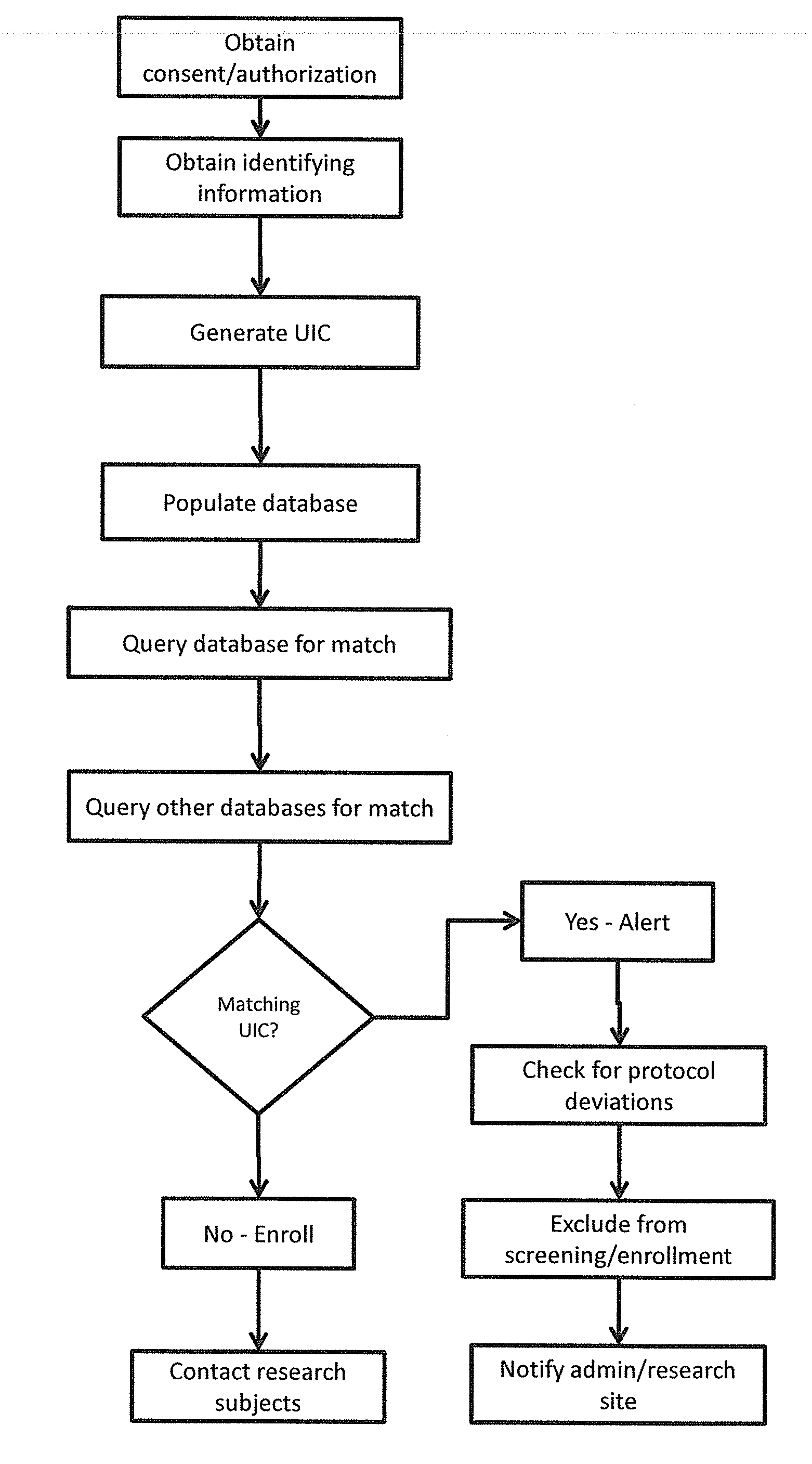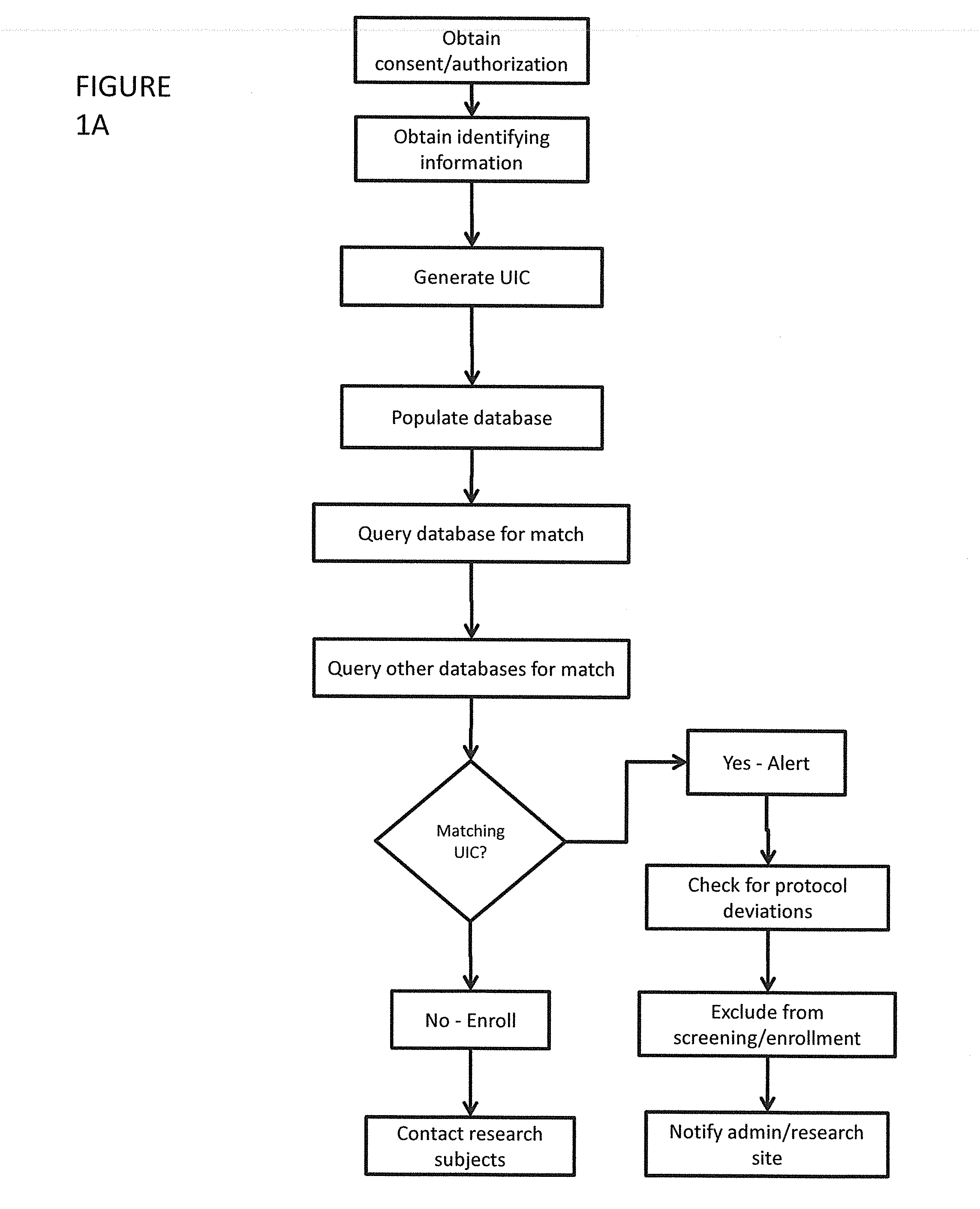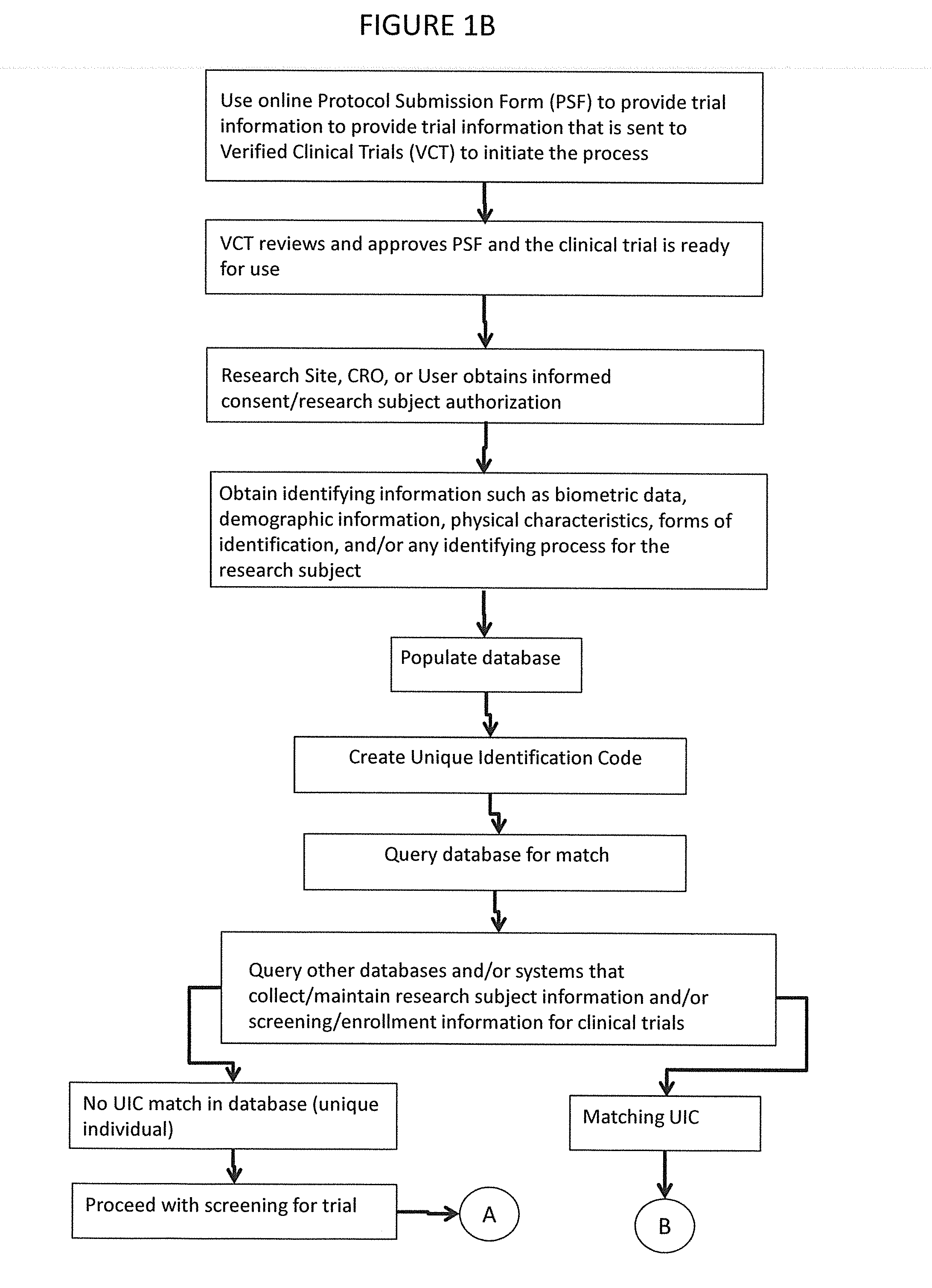Method for creating and using registry of clinical trial participants
a clinical trial and registry technology, applied in the field of clinical trial registry, can solve the problems of unreliable data for the organization conducting the trial, inability to easily prevent multiple enrollments under false information, and danger to the health of the person
- Summary
- Abstract
- Description
- Claims
- Application Information
AI Technical Summary
Benefits of technology
Problems solved by technology
Method used
Image
Examples
example 1
[0051]FIGS. 2-4 show more detailed steps in the method of screening participants for the clinical trials. Each of these steps can be modified as necessary for a particular trial. TABLE 1 below summarizes the various steps of inputs, outputs, and rules violated. Failure Rules and Warning Rules are also summarized below.
[0052]In the first step (1), it must be determined whether the patient credentials match deleted UIC's within the system. If there is a match, it is checked whether the data was entered 30 days or more. If 30 days have passed, the same UIC can be assigned to the participant and they can be entered in the trial. If it has been less than 30 days, there is a verification failure and the participant should not be entered in the trial.
[0053]If the patient credentials did not match deleted UIC's, a complete match is checked for at (2). If there is a complete match, and if the participant is in Screening or Randomized, there is a verification failure. Once a patient signs a s...
example 2
[0072]The following is an example of an algorithm used to encrypt and decrypt data.
PUM
 Login to View More
Login to View More Abstract
Description
Claims
Application Information
 Login to View More
Login to View More - R&D
- Intellectual Property
- Life Sciences
- Materials
- Tech Scout
- Unparalleled Data Quality
- Higher Quality Content
- 60% Fewer Hallucinations
Browse by: Latest US Patents, China's latest patents, Technical Efficacy Thesaurus, Application Domain, Technology Topic, Popular Technical Reports.
© 2025 PatSnap. All rights reserved.Legal|Privacy policy|Modern Slavery Act Transparency Statement|Sitemap|About US| Contact US: help@patsnap.com



